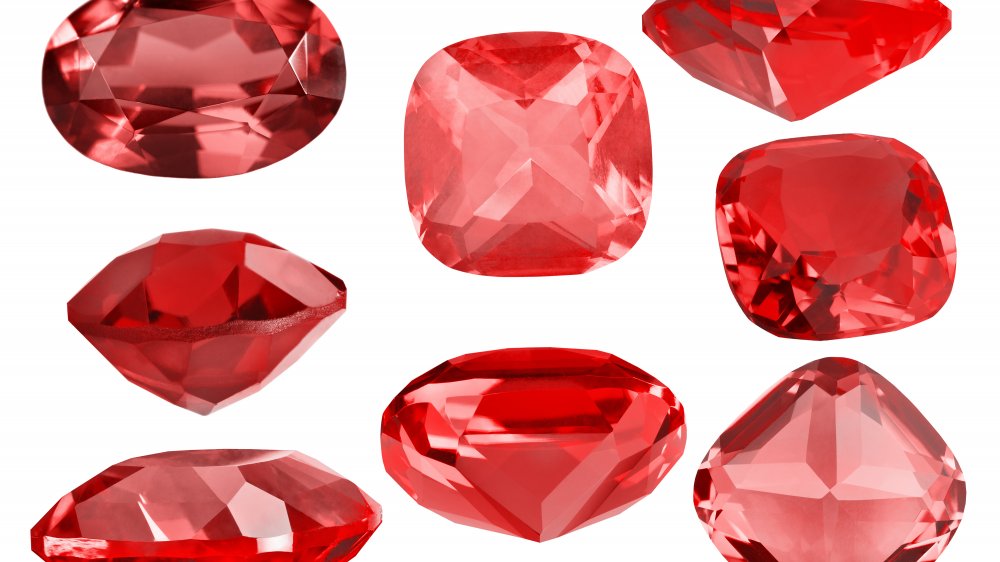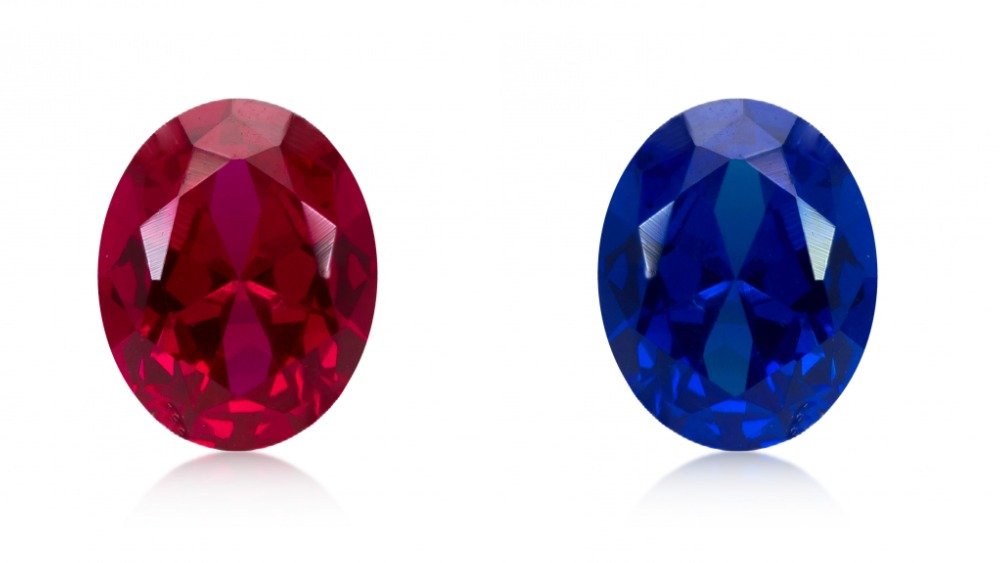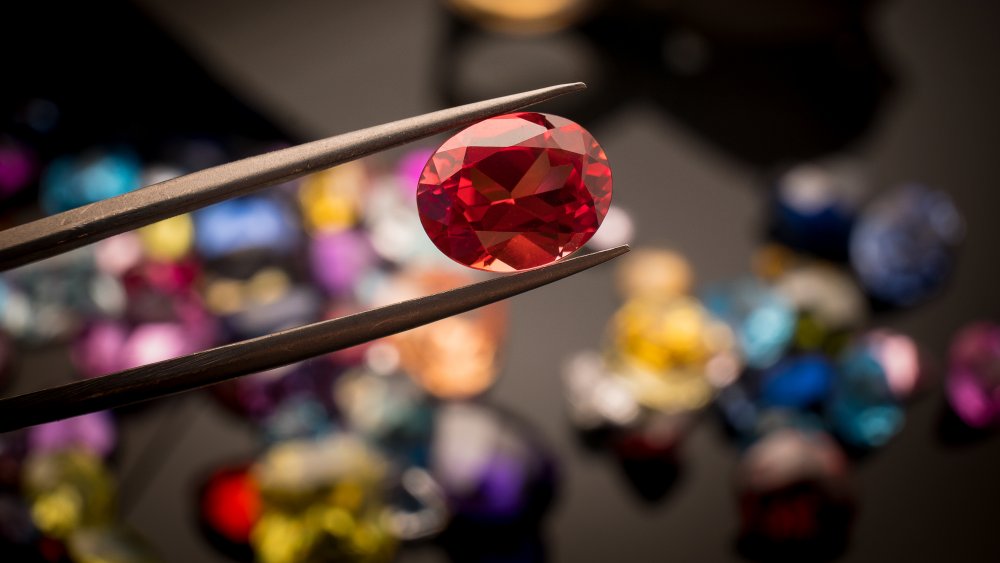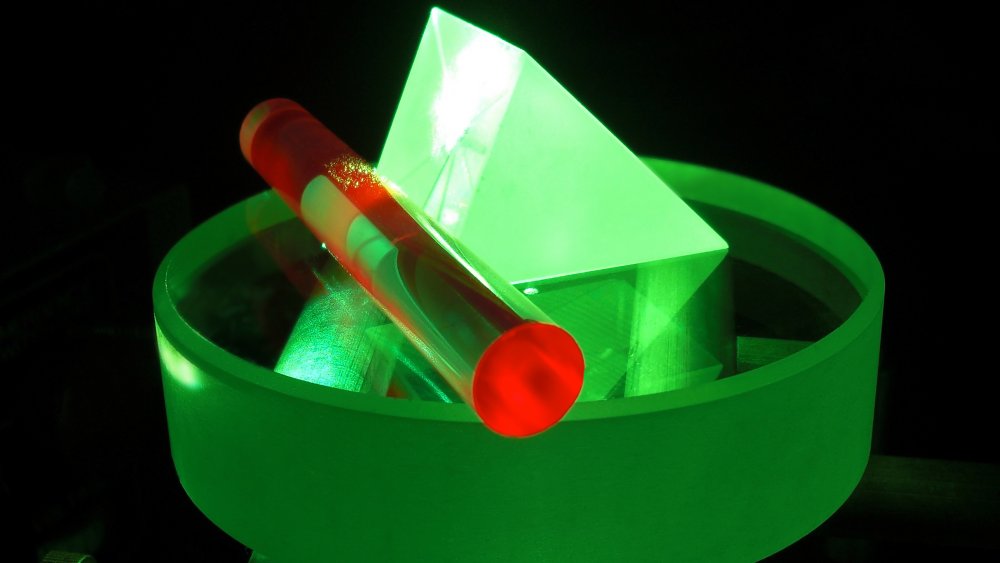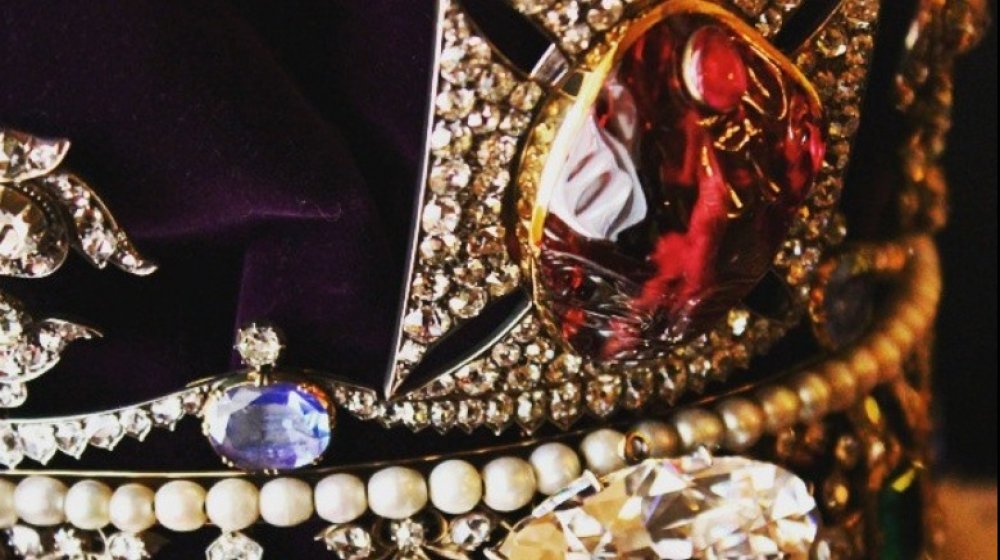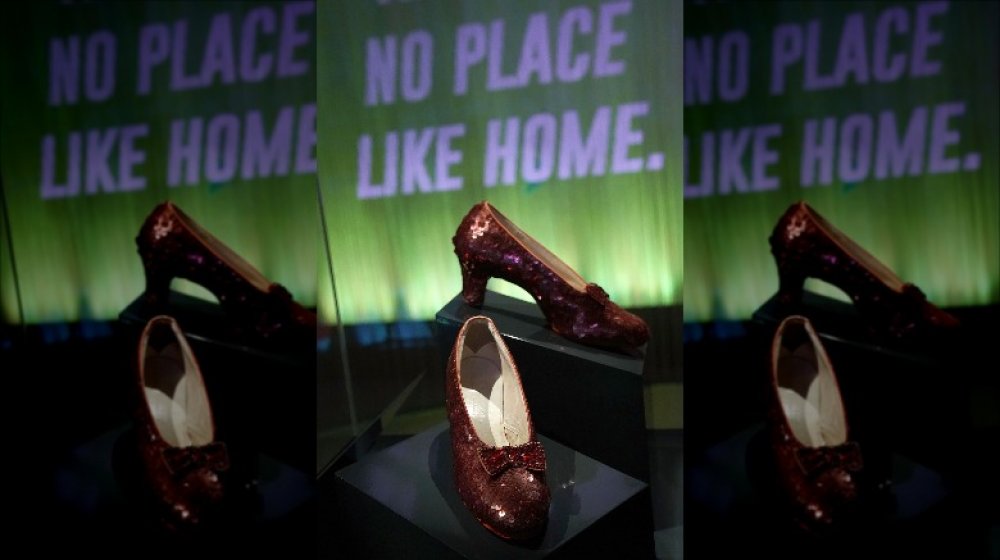The Untold Truth Of Rubies
Rubies, along with diamonds, sapphires, and emeralds, are the only types of gemstone characterized as precious. Rubies are also one of the hardest natural substances in existence — at 9 on the Mohs Scale of Hardness, The Spruce Crafts says that only diamonds are harder, with sapphires and rubies being evenly matched. Sizable rubies tend to be more valuable than diamonds, as rubies over 10 carats often sell for nearly double what similarly-sized diamonds might ($225,000-plus per carat as compared to $125,000). This is likely due to the fact that larger rubies are much rarer than are large diamonds, so the price reflects their scarcity.
Rubies are perhaps best known for being the July birthstone. Even if you weren't a July baby, and you haven't got any of your own, there's still another special occasion linked to this gemstone. If you reach either your 15th or your 40th anniversary, you'll definitely deserve a gift of rubies, which 100 Ways relates are the traditional gift for both occasions.
Rubies and sapphires are more or less the same thing
A ruby by any other name (or color) would actually be a sapphire. Langerman Diamonds explains that both gems are forms of the mineral corundum and are composed of alumina and oxygen. Trace amounts of the element chromium give the ruby its vivid red color, and it is this red color alone that separates rubies from sapphires. That is why there is no such thing as a red sapphire, or a blue (or any other color) ruby.
Meanwhile, typical sapphires get their bright blue color from iron and titanium, but tiny amounts of other elements such as copper or magnesium can create other color variations. These are also known as sapphires, with the color descriptor added to the name, such as pink sapphires, and yellow sapphires.
Manmade rubies have been around for over 100 years
Rubies are undeniably gorgeous and crave-worthy, but they are also prohibitively expensive. Jewelers around 1850 were making simulated rubies by fusing pieces of garnet to pinkish-red glass to create the gems known as garnet doublets. By the late 1800s, synthetic rubies made by a process called "flame-fusion" were commercially available, and by 1900 this technique had been perfected to such an extent by chemist Auguste Verneuil, that his synthetic rubies were exhibited at the World's Fair in Paris.
If you're wondering how to tell a lab-created ruby from a natural one, it's easy enough if you have the tools and the expertise. Consider that nearly all natural rubies have some type of imperfection, so a flawless ruby is almost certain to be synthetic. Even natural rubies are often treated to improve their durability and color, but jewelers are obligated to disclose any type of treatment to the buyer.
A ruby was used to create the world's first laser
Synthetic rubies actually have uses outside of jewelry in both microelectronics and laser technology. In fact, a synthetic ruby was used to make the first-ever laser. Gem Rock Auctions explains that in 1960, inventor Theodore Maiman formed a ruby crystal into a cylinder, then placed a fully-reflecting mirror at one end, and a partially-reflecting mirror at the other. A high-intensity lamp was spiraled around the ruby cylinder to provide a flash of white light, and this light triggered the laser action.
Did we lose you yet, or do you still want more of an explanation of how this scientific phenomenon actually works? Well, it seems the green and blue wavelengths from the high-intensity lamp get the electrons in the ruby's chromium atoms all excited. Once they return to normal, they emit a red light. The mirrors reflect the light back into the ruby, which re-stimulates it to produce yet more red light, and eventually it builds up to such a high power that all the energy beams out of the crystal in the form of bright red "laser light." Even after 60 years, the original type of ruby laser is still utilized for medical and cosmetic procedures, in high-speed photography, and even for producing holograms.
Some of the most famous rubies are actually impostors
Up until the late 18th century, red varieties of the semi-precious stone spinel were mistakenly assumed to be rubies. As a result of this misapprehension, Harper's Bazaar Arabia reveals that quite a few of the most well-known rubies are, gasp, actually not rubies at all. The Black Prince's "Ruby" that has been part of the British royal family's crown jewels since 1367, and today adorns the Imperial State Crown, is actually the Black Prince's Spinel. Iranian jewelers Argo add the additional information that another one of the crown jewels, the Timur "Ruby," is, you guessed it, a spinel, as is the 398.72 carat Catherine the Great's "Ruby" that sits atop the Great Imperial Crown of Russia.
Rubies symbolize both passion and protection
In the Bible, a virtuous woman is said to have a price far above rubies (via BibleHub), and wisdom is also said to be better than rubies (via BibleHub). Whether these proverbs imply that the Bible authors do or do not think highly of this gemstone, its brilliant red color has been used to symbolize both love and passion of the religious, as well as the romantic, kind. In ancient times, rubies were also seen to have the power to drive out sorrow and, in some cases, to bring light into the darkness in a quite literal way, although no claims of rubies being able to lead lost spelunkers out of unlit caverns have ever been substantiated.
One ancient legend with a surprising modern counterpart is that of the ruby as a sort of protective talisman. The Spruce Crafts notes that while long-ago warriors once wore rubies into battle to ward off danger, Dorothy's ruby slippers in The Wizard of Oz served much the same purpose in bringing her safely home.
